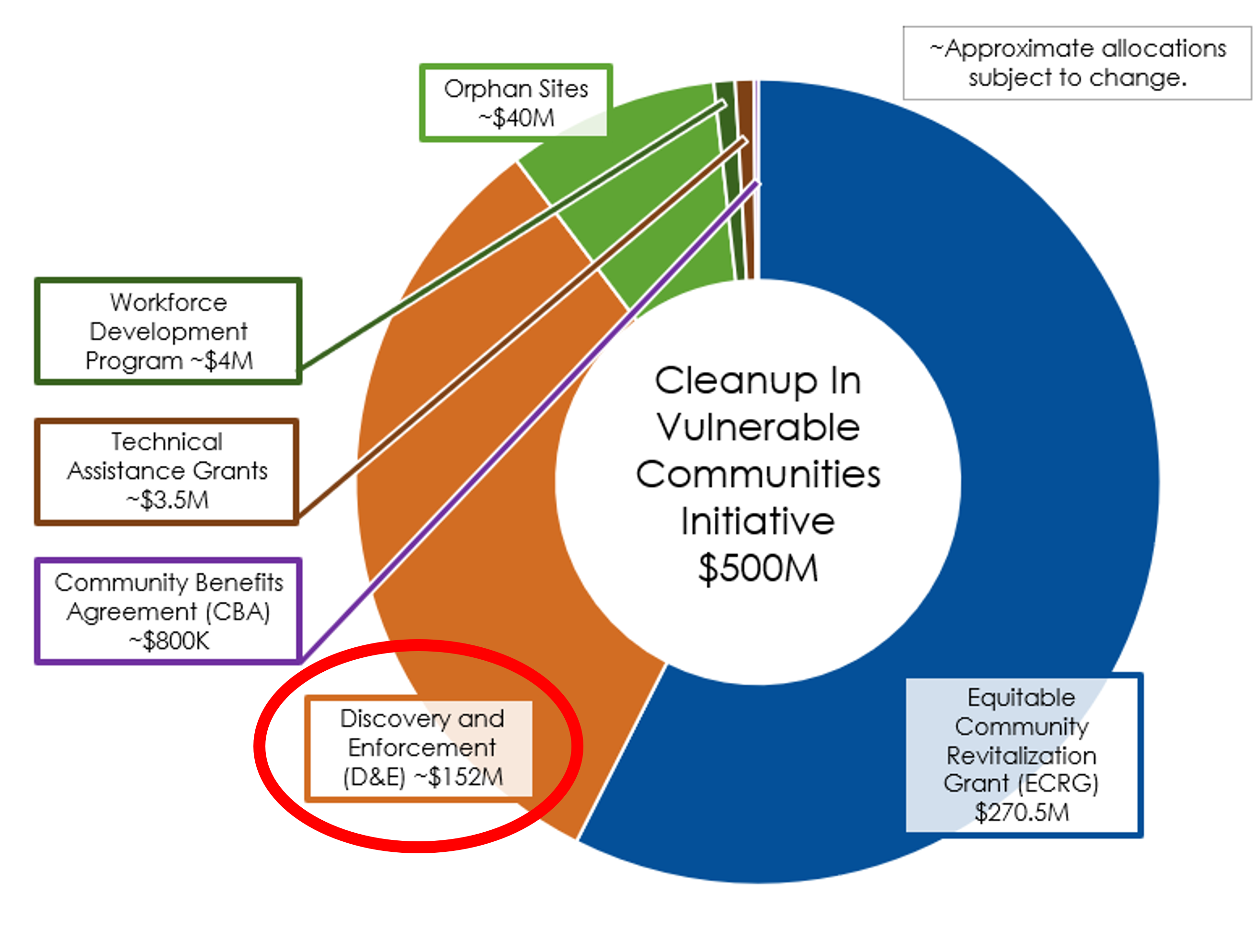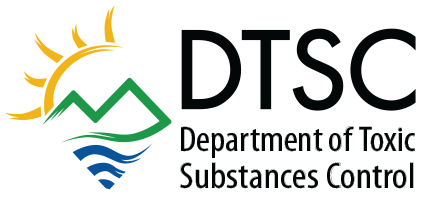Discovery and Enforcement Program
About the Discovery and Enforcement Program
The Discovery and Enforcement (D&E) Program is being established as part of the Cleanup in Vulnerable Communities Initiative (CVCI) to protect the health of vulnerable communities. This new site discovery program will focus on sites containing dry-cleaning chemicals that have been released into the environment and could affect our communities.
The D&E Program within CVCI will issue approximately $152 million in contracts over four years.

This program will prioritize investigation and cleanup of dry-cleaning sites in communities with high cumulative environmental burdens (in the 75th percentile and higher on CalEnviroScreen 3.0 and close proximity to housing and other places where vulnerable people may be exposed to these chemicals. The program will also solicit input from the public to identify other sites to prioritize for action.
DTSC will implement the following key steps with a focus on dry-cleaning sites and other sites in California’s most vulnerable communities:
- Prioritize sites based on CalEnviroScreen 3.0 scores and proximity to housing or other areas with vulnerable individuals.
- Perform Phase I Environmental Site Assessments and discovery investigations to evaluate potential releases and risks associated with contamination from dry-cleaning operations.
- Implement immediate response actions, if necessary, for immediate protection of occupants of the site and occupants of nearby residential and other buildings.
- Perform additional environmental investigations, as appropriate.
- Initiate enforcement where a release has occurred and presents unacceptable risks to nearby sensitive receptors (residences, school, day cares, etc.) and includes:
- Additional sampling to fully characterize a site and the risks posed by a site to onsite and offsite receptors; and
- Development, selection, and implementation of a cleanup plan.
- Enter into legally-binding consent orders with willing responsible parties, issue unilateral orders to uncooperative responsible parties, or conduct additional investigation and remediation activities using State funding, as appropriate for each site.
- To the extent feasible, DTSC will require the use of community benefit agreements at sites where a responsible party has been identified and is financially viable.
- Conduct cleanups at sites where there is a need for cleanup but where there is no viable responsible party.
Why Dry-Cleaning?
In 1991, the California Air Resources Board (CARB) identified Perchloroethylene (Perc or PCE) as a toxic air contaminant. At the time dry-cleaning operations were found to be a major source of PCE exposure to the public. PCE is a potential cancer-causing chemical. CARB subsequently approved regulations to reduce PCE emissions from dry-cleaning operations. Due to these regulations, PCE will no longer be used in dry-cleaning operations by January 1, 2023.
A survey conducted by the State Coalition for Remediation for Dry Cleaners estimates that 75% of dry-cleaning facilities in the United States have caused contamination. Many dry cleaners are also small companies with limited funding. In California, there are approximately 7,500 known dry-cleaning facilities.
For more information about dry-cleaning, see:
- State Coalition for Remediation of Dry Cleaners website
- CARB webpage on Phase Out of Perchloroethylene from the Dry Cleaning Process
What is Vapor Intrusion?
When some chemicals are spilled or dumped, they can form vapors that travel through the soil, reach under buildings, and contaminate the indoor air. Vapors can reach the indoor air through cracks in foundations, utility pipes, and sewer lines. If groundwater is contaminated, it can spread farther and affect buildings and homes at a greater distance.
Vapor-forming chemicals can easily move into the air and form vapors. Common vapor-forming chemicals includes Perchloroethylene (PCE), which was commonly used in dry-cleaning.
For more information about vapor intrusion, see:
Other Useful Resources
DTSC One-Page Fact Sheets:
Primary Contacts
Email: DiscoveryEnforcement@dtsc.ca.gov
Page last updated June 15, 2022
Discovery and Enforcement Program Links
Site Mitigation & Restoration Program Links
- Brownfields
- Cleanup in Vulnerable Communities Initiative (CVCI)
- EnviroStor
- Exide
- Human and Ecological Risk Office
- Lead-Acid Battery Recycling Facility Investigation and Cleanup Program
- Loans & Grants
- Land Use Restriction Sites
- Santa Susana Field Laboratory
- School Sites
- Sea Level Rise
- State Superfund Program
- Strategic Plan and Program Enhancement Work Plan
- Vapor Intrusion
- Contact Information

